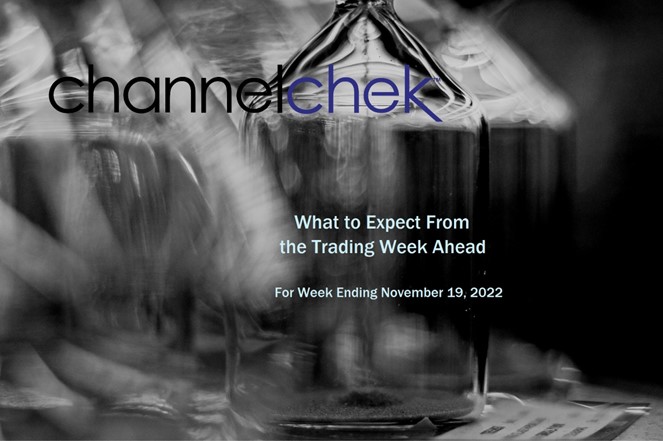
There is Potential for a Change in Sentiment Spurred by this Week’s Wholesale Inflation Report
One economic number doesn’t make a trend. The members of the Federal Open Market Committee know this, and certainly, the Chair, Jay Powell, understands. As it relates to last week’s CPI report, he may wish that one lower-than-expected inflation data point could prevent him from needing to do more, but it simply isn’t enough info from which the Fed can glean any actionable information.
As we head into the first trading session of a new week, it’s uncertain what the reaction of interest rates will be. They dropped substantially in response to last Thursday’s inflation data coming in better than expected. However, there was no chance of follow-through or reversal as Friday’s Veteran’s Day holiday left the bond markets closed.
With this, inflation numbers continue to be the most significant for both stock and bond investors. On this coming Tuesday, November 15, wholesale prices will be reported as the Producer Price Index (PPI). This release could have more weight in trade action than usual.
Thursday is another big day on the calendar as the markets will be grappling with a larger-than-normal volume of economic releases.
Monday 11/14
- 11:00 AM ET, The NY Federal Reserve Bank’s one and five-year inflation forecast. This is not an event that is usually paid much attention to by market participants. However, considering there are many parties interested in what members of the Federal Reserve System are now thinking, a dramatic shift from the previous forecast could inspire the financial markets to adjust accordingly.
Previously the one-year inflation expectation was 5.7%. The five-year inflation forecast was 2.2%.
Tuesday 10/15
- 8:30 AM ET, The Producer Price Index (PPI) from the Bureau of Labor Statistics (BLS) is an inflation gauge that measures the average change over time in the prices received by U.S. producers of goods and services. The prices are typically considered input costs for final products and can impact CPI, it may also impact company costs of production and, therefore, profits. The trend has been lower, YOY PPI has been running at 8.5%, and last month, it rose 0.4%, the expectation is for another 0.4% increase.
- Michael Burry, and Warren Buffet’s holdings. The SEC requires investment funds to file a 13-f disclosing their publicly traded security positions. It is required every 45 days, making all of the information a minimum of 45 days old. Looking at a successful investor’s 13F filings can be revealing, especially when looking at industries they’ve been hot on or comparing one holding period to another.
Wednesday 10/16
- 11:00 AM ET, The Mortgage Bankers Association (MBA) creates a statistic from several mortgage loan indexes. The Mortgage Applications index measures applications at mortgage lenders. It’s considered a leading indicator and is especially important for single-family home sales and housing construction. Both are considered foundational in a strong economy. Last week the Purchase Index was 162.6.
- 11:00 AM ET, The Mortgage Bankers Association (MBA) also provides an average 30-year mortgage level which is consistently calculated so that it is an oranges-to-oranges comparison from previous periods. Last period the rate was 7.14%.
- 12:30 PM ET, Export Prices (MoM), this data set reflects changes in prices of goods and services that are produced in and exported from the United States in the given month compared to the previous one. Last reading, this came in at a negative 0.8%.
- 12:30 PM ET, Import Prices (MoM) The import price index m/m measures the price changes of the respective month compared to the previous month. Last month they fell 1.2% (not adjusted for fx), this month, expectations are for a decline of 0.5%.
- 12:30 PM ET, U.S. Retail Sales have been flat, neither rising nor falling. As we head toward Thanksgiving and Black Friday sales levels, the market will be taking more and more interest in how strong the consumer is. Expectations for October are for a rise of 0.8 percent overall, an increase from 0.0 percent. When excluding vehicles, the projection is for an increase of 0.4%, up from 0.1%. and up 0.4 when also excluding gasoline.
- 1:15 PM ET, Capacity Utilization is expected to remain unchanged at an 80.3% use of available manufacturing capacity. Reading well above, this may be considered inflationary as production could be using less efficient means.
- 1:15 PM ET, Industrial Production is expected to have been weaker at a 0.2% increase compared to a 0.4% increase.
- 2:00 PM ET, NAHB Housing Market Index this is expected to continue weakening, the October number was 38.
- 2:00 PM ET, Business inventories are expressed in dollar value held by manufacturers, wholesalers, and retailers. The level of inventories in relation to sales is an important indicator of the near-term direction of production activity. Rising inventories can be an indication of business optimism that sales will be growing in the coming months. However, if unintended inventory accumulation occurs, then production will probably have to slow while those inventories are worked off. Last month’s inventories increased by 0.8%.
Thursday 10/17
- 12:30 PM ET, Housing Starts, last month housing starts had declined for the seventh consecutive month by 8.7%.
Friday 10/18
- 2:00 PM ET, Leading Economic Indicators are expected to show a decline of 0.3% vs. a decline of 0.4% the prior month.
What Else
The focus on signs of economic weakness or receding inflation will be high, and reactions may be extra sensitive. The following week is shortened in terms of trading. The focus will be on how strong the consumer shows they will be for the holidays.
Managing Editor, Channelchek